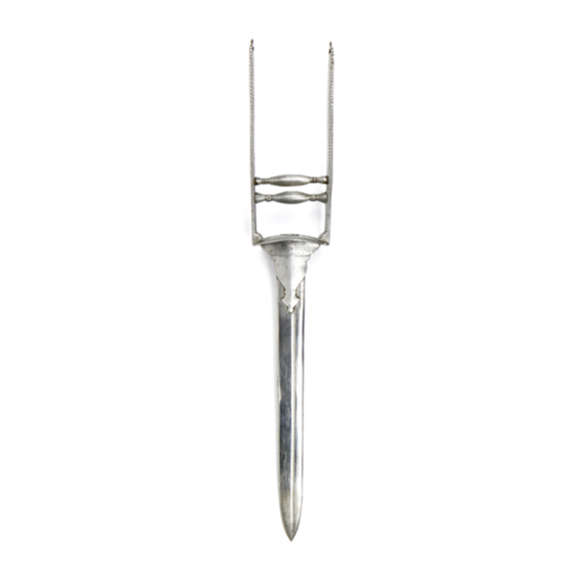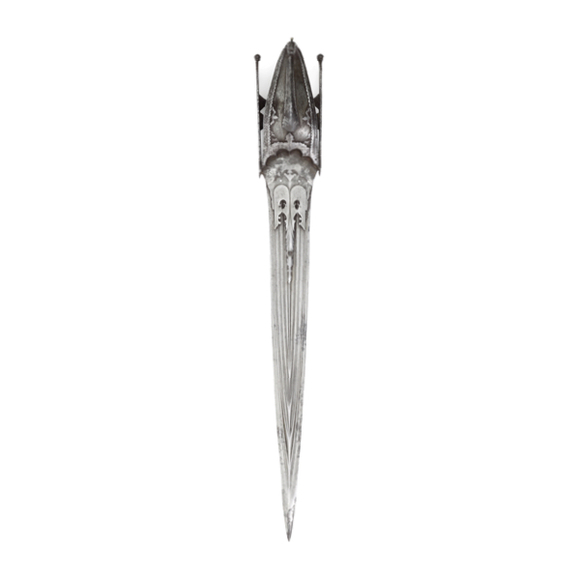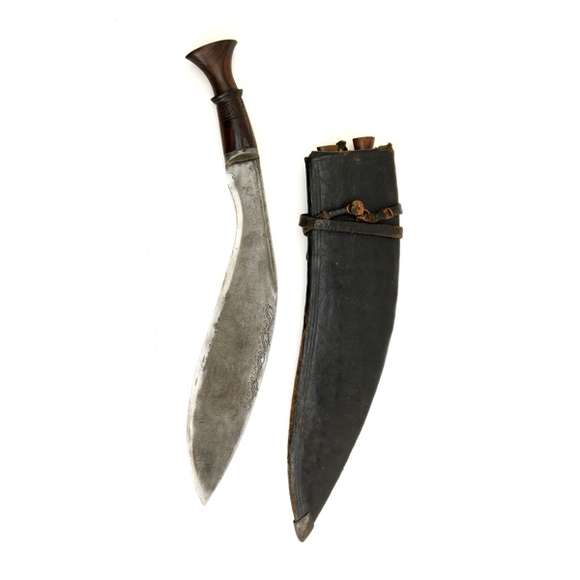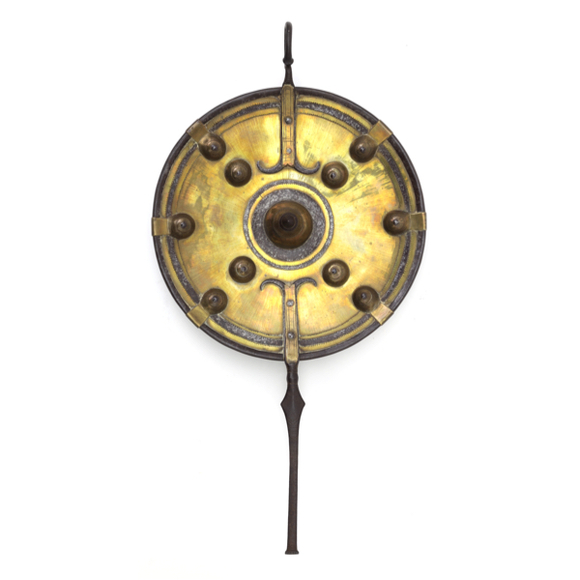Language: One of the Indian languages
Source: Egerton
Description
Garsoee katar is the name with which Lord Egerton describes a particular type of katar that is commonly associated with the Kutch region.1
The katar in question was acquired in 1867 and described as:

Dagger; "Garsoee Katár;" bright steel blade with a perforated and gilt central rib.
Hilt chased and gilt; curved sideguards. Velvet sheath with embossed and gilt mounts.
Bhúj, Kach. (Pl. xiv. No 727.) 2
It is unknown to me at this point what Garsoee means and even what language it is.
The katar in question was transferred to the Victoria and Albert Museum in 1875, where it remains under accession number: 3404&A/(IS):

Victoria and Albert Museum, accession number: 3404&A/(IS).
Photo credit: Victoria & Albert Museum.
Geographical attribution
Although the style of these katar is quite distinct, it remains in question whether they actually all originate from Kutch. Some certainly do, exhibiting typical Kutch work like the one described by Egerton.
Yet others seem more southern. Take for example, Metropolitan Museum, accession number 36.25.918.
 Metropolitan Museum, accession number 36.25.918.
Metropolitan Museum, accession number 36.25.918.
Bequest of George Cameron Stone.
This katar follows the general hilt form of the example described by Egerton, up to the polyhedron ball grip. Yet, other features of its construction, mainly the blade being riveted to langets that attach to a concave hilt base, are more southern features.
Another katar that shakes up the geographical attribution of this hilt form is Royal Collection accession number: RCIN 11407.

British Royal Collection accession number RCIN 11407.
It was presented to Edward VII, when Prince of Wales, during his tour of India in 1875–76 by Zahir-ud-Daula, Nawab of Arcot.
The catalog description further mentions that:
It is inset with roundels of pierced gold foils fused with coloured glass called thewa plaques, which were produced by only a handful of workshops based in central India, namely Pratapgarh, Ratlam and Indore.
The true origin of this unusual katar is, at best, rather murky. It does share the open blade of Egerton's example that was supposedly made in Bhuj, but none of its other design features, or its provenance, seem to point towards Kutch.
Conclusion
The katar that Egerton calls a Garsoee katar was a distinct form of katar that was at some point produced in Kutch but the design was by no means exclusive to that region. More research is needed about this style and its origins.
Notes
1. Lord Egerton of Tatton: Indian and Oriental Arms and Armour. Dover Publications; Revised edition, 2002. Page 138, number 727.
2. Ibid.





